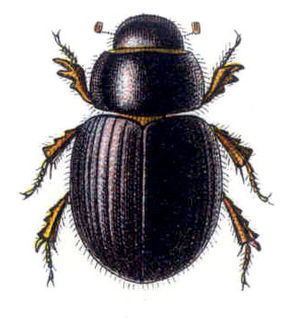 W
WAegialiinae is a small subfamily of the family Scarabaeidae. Historically the group has been treated as a tribe within a broad definition of the subfamily Aphodiinae.
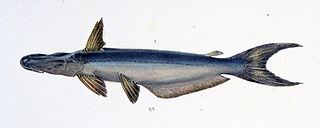 W
WAgeneiosus ucayalensis is a species of driftwood catfish of the family Auchenipteridae. It can be found in South America.
 W
WAmbassis macleayi, commonly known as Macleay's glassfish, Macleay's glass perchlet, Macleay's perchlet, reticulated glassfish, reticulated perchlet, or network perchlet, is a species of freshwater fish in the family Ambassidae. It is native to northern Australia and the trans-Fly River region of New Guinea. It is a fish with a vertically flat, narrow body and a standard length generally between 35 and 45 mm, with large specimens reaching 77 mm (3.0 in) long. It generally eats water fleas and other small invertebrates. This fish is considered to be a least-concern species according to the International Union for Conservation of Nature (IUCN), although it could suffer from habitat degradation due to feral pigs and invasive water plants such as the water hyacinth. The fish is suitable for aquarium use in tanks containing other non-aggressive species.
 W
WAnadoras weddellii is a species of thorny catfish that is found in Argentina, Brazil, Bolivia and Paraguay. This species grows to a length of 15.0 centimetres (5.9 in) SL.
 W
WAstraeus flavopictus is a species of beetle in the jewel beetle family, Buprestidae, found in Australia.
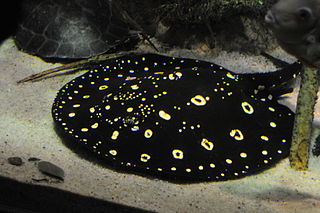 W
WThe bigtooth river stingray or Tocantins River ray is a species of freshwater fish in the family Potamotrygonidae. It is endemic to the lower Tocantins basin and Araguaia basin in Brazil, and prefers muddy bottoms. It is sometimes kept in aquaria. This stingray is generally common and its population increased after the Tucuruí Dam was completed, unlike many other species in its range.
 W
WThe black musselcracker is a South African species of marine fish in the family Sparidae. It is the only species of its genus Cymatoceps. It reaches 1.5 m in length and almost 35 kg (77 lb) in weight. It is found in coastal rocky areas to depths of 80 m (260 ft), and feeds on hard-shelled invertebrates such as crabs and sea urchins.
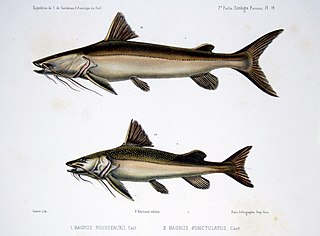 W
WBrachyplatystoma rousseauxii, the gilded catfish or dourada, is a species of catfish of the family Pimelodidae that is native to Amazon and Orinoco River basins and major rivers of French Guiana.
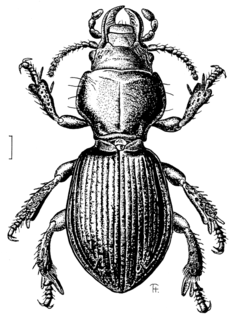 W
WMecodema antarctica is a carnivorous carabid beetle, the only species in its genus, that burrows in sand above the high tide mark on New Zealand sandy beaches. Bot species were first described by Francis de Laporte de Castelnau in 1867.
 W
WCaesioperca is a genus of ray-finned fish in the sub-family Anthiinae in the sea bass family Serranidae. It contains just two species, found in the ocean off Southern Australia and New Zealand.
 W
WThe Cape galaxias is a species of freshwater fish of the family Galaxiidae.
 W
WThe breaksea cod, black-arse cod or tiger cod, is a species of marine ray-finned fish in the family Serranidae, the groupers and sea basses. It is endemic to Australia. Its natural habitats are open seas, shallow seas, subtidal aquatic beds, and coral reefs. This species is the only member of its genus.
 W
WColaspidea is a genus of leaf beetles in the subfamily Eumolpinae. It is known from North America and the Mediterranean. It has recently been suggested that the Mediterranean species of Colaspidea are a sister genus to Chalcosicya, and that Colaspina forms a sister genus to the former two combined. It has also been suggested that the North American species of Colaspidea may represent a separate genus.
 W
WColaspidema is a genus of leaf beetles in the subfamily Chrysomelinae.
 W
WColasposoma is a genus of leaf beetles in the subfamily Eumolpinae. It is known from Africa, Asia and Australia.
 W
WCristiceps aurantiacus is a species of clinid found around New South Wales, Australia and New Zealand. It lives in tide pools and the subtidal zone to a depth of 30 metres (98 ft). Its diet consists of crustaceans and small fishes. It can reach a length of 22 centimetres (8.7 in) TL.
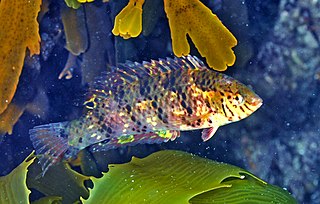 W
WDotalabrus aurantiacus, Castelnau's wrasse, is a species of wrasses native to the Indian Ocean coasts of Australia. It is the type species of its genus. The type locality is Adelaide, St. Vincent Gulf, South Australia.
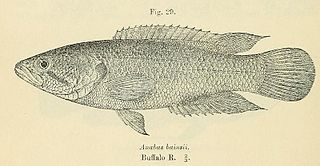 W
WThe Eastern Province rocky, also known as rocky kurper, is a species of fish in the family Anabantidae. It is endemic to South Africa.
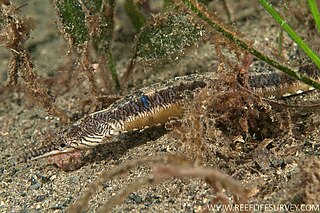 W
WThe tiger pipefish is a species of pipefish native to the marine waters around Australia at depths of from 2 to 27 metres. This species grows to a length of 29.6 centimetres (11.7 in) SL. This species is the only known member of its genus.
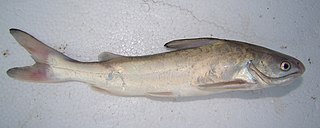 W
WGenidens is a genus of sea catfishes found along the Atlantic coast of South America. There are currently four recognized species in this genus.
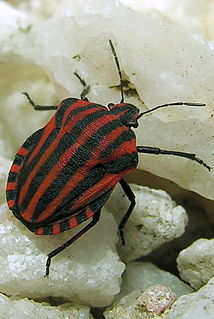 W
WGraphosoma is a genus of the family Pentatomidae known as the striped shield bugs for their distinctive markings.
 W
WThe leathery grunter is a species of fish in the family Terapontidae. It is endemic to Queensland (Australia). The eggs are fanned and guarded by the male parent.
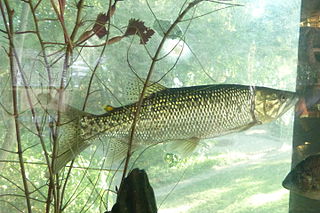 W
WHepsetus cuvieri, sometimes known as the African pike or Kafue pike characin, is a predatory freshwater fish found in southern Africa. This species was described in 1861 by the French naturalist Francis de Laporte de Castelnau.
 W
WHeteroclinus is a genus of clinids found in the western Indo-Pacific.
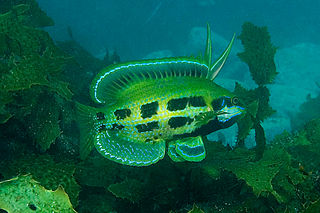 W
WHeteroscarus acroptilus, the rainbow cale, is a species of weed whiting endemic to Australia where it is found in marine waters along the southern coast. It inhabits rocky reefs that have plentiful growth of brown algae and also in beds of seagrass, particularly those of the genus Posidonia. It occurs at depths of from 1 to 15 metres. This species grows to a length of 24 centimetres (9.4 in) SL. It can also be found in the aquarium trade. This species is the only known member of its genus.
 W
WHydrocynus vittatus, the African tigerfish, tiervis or ngwesh is a predatory freshwater fish distributed throughout much of Africa. This fish is generally a piscivore but it has been observed leaping out of the water and catching barn swallows in flight.
 W
WHydrophilus insularis is a species of water scavenger beetle in the family Hydrophilidae. It is found from northern South America north throughout the Caribbean, Central America, and Mexico into southern Arizona, California, Texas, and Florida in the United States.
 W
WLaportea is a genus of plants in the family Urticaceae. They are herbaceous, either annual or perennial. Like many plants of the Urticaceae, they have stinging hairs. There are stinging and non-stinging hairs on the same plant. The genus was named after the French naturalist Francis de Laporte de Castelnau.
 W
WLuciola is a genus of "flashing" fireflies, especially well-known from Japan. They are often called "Japanese fireflies", but their members range farther into Asia and reach southern Europe and Africa. This genus is traditionally held to extend to Australia, but these species do not seem to belong herein.
 W
WThe Cape horse mackerel is a mackerel-like species in the family Carangidae. It is a pelagic species of the south eastern Atlantic Ocean which is a target of fisheries, mainly as bycatch.
 W
WMecodema crenicolle is an endemic species of ground beetle from New Zealand.
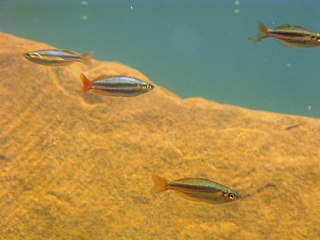 W
WMelanotaenia australis, the western rainbowfish, is a species of freshwater rainbowfish endemic to Australia's Kimberley and Pilbara, Top End.
 W
WMelanotaenia duboulayi, the crimson-spotted rainbowfish, less commonly known as the Duboulay's rainbowfish, is a species of freshwater rainbowfish endemic to eastern Australia. M. duboulayi has also been kept in aquariums since the early 20th century, and is the original Australian rainbowfish.
 W
WMerluccius capensis is a ray-finned fish in the genus Merluccius, found in the south-eastern Atlantic Ocean, along the coast of South Africa. It is a long, lean fish with a large head, similar in appearance to the European hake and the deep-water Cape hake. By day, it lives close to the bottom on the continental shelf and upper slope at depths not usually exceeding 400 m (1,300 ft); it makes a large, daily vertical migration rising at night to feed in the nectonic zone, and it also migrates southwards in spring and northwards in autumn. It is an important commercial fish species in southern Africa.
 W
WMesonauta acora is a species of cichlid fish native to blackwater in the Xingu and Tocantins River basins in South America. The species was named by François Louis de la Porte, comte de Castelnau in 1855.
 W
WNeoarius is a genus of sea catfishes found on and around the island New Guinea and Australia. They are found in marine, brackish waters and fresh waters with several species restricted solely to freshwater rivers. There are currently 10 described species in this genus.
 W
WNeoceratodus is a genus of lungfish in the family Neoceratodontidae. The extant Australian lungfish is the only surviving member of this genus, but it was formerly much more widespread, being distributed throughout Africa, Australia, and South America. Species were also much more diverse in body plan; for example, the Cretaceous species Neoceratodus africanus was a gigantic species that coexisted with Spinosaurus in what is now the Kem Kem Formation of Morocco. The earliest fossils from this genus are of Neoceratodus potkooroki from the mid Cretaceous (Albian-Cenomanian) Griman Creek Formation of Australia, remains from the Late Jurassic of Uruguay assigned to this genus probably do not belong to the genus.
 W
WNeoniphon is a genus of squirrelfishes.
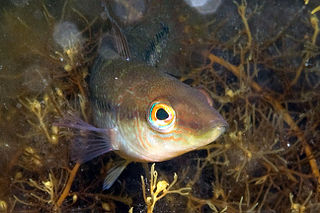 W
WThe little weed whiting is a species of ray-finned fish, a weed whiting from the family Odacidae which is endemic to Australia. It occurs along the Southern Australian coast, including Tasmania, ranging north to Cockburn Sound on the Indian Ocean side, and to north of the city of Sydney on the Pacific Ocean side. It inhabits marine and brackish waters, preferring sheltered areas such as estuaries and also on rocky reefs and in seagrass beds. It occurs at depths of from 1 to 22 metres. This species grows to a length of 14 centimetres (5.5 in) SL. It can also be found in the aquarium trade. This species is the only known member of its genus.
 W
WNeotrygon is a genus of stingrays in the family Dasyatidae commonly known as the Maskrays, native to the Indo-West Pacific. They are so named because of a distinctive color pattern around their eyes, resembling a mask. The species in this genus were originally placed in the genus Dasyatis by most authors. However, recent morphological and molecular analyses have conclusively showed that they represent a distinct group and so the genus Neotrygon was resurrected for them.
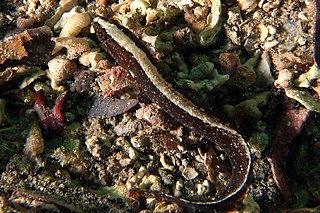 W
WOphiclinus is a genus of clinids native to the coastal waters around Australia.
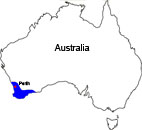 W
WThe western pygmy perch is a species of temperate perch endemic to southwestern Australia.
 W
WPhanaeus demon is a species of beetles belonging to the family Scarabaeidae. This species is often incorrectly named as "damon" in collections and in the literature.
 W
WThe rover fireflies (Photinus) are a genus of fireflies. They are the type genus of tribe Photinini in subfamily Lampyrinae. This genus contains, for example, the common eastern firefly, the most common species of firefly in North America.
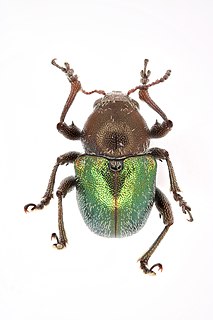 W
WPseudocolaspis is a genus of leaf beetles in the subfamily Eumolpinae. It contains about 80 species, which are found in tropical Africa.
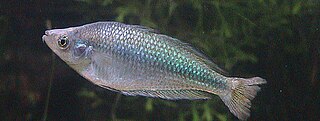 W
WThe Australian rainbowfish, known less commonly as the Murray River rainbowfish or the crimson-spotted rainbowfish, is a species of freshwater rainbowfish endemic to Australia. They are very colourful, hence their name; males of this species are more colourful than females. Australian rainbowfish are schooling fish and will congregate near logs or riverbanks.
 W
WThe red morwong, also known as the sea carp, is a species of marine ray finned fish traditionally regarded as belonging to the family Cheilodactylidae, the members of which are commonly known as morwongs. It is found off southeast Australia and the North Island of New Zealand from shallow depths to at least 55 m, on rocky reef and coastal areas. Its length is between 30 and 60 cm.
 W
WRetroculus lapidifer is a species of cichlid native to tropical South America, where it is found in the rivers of the southeastern Amazon basin in Brazil. This fish was first described in 1855 by the French naturalist Francis de Laporte de Castelnau, who studied the fauna of South America while crossing the continent from Rio de Janeiro to Lima in an expedition starting in 1843 and lasting five years.
 W
WRhycherus filamentosus, commonly known as the tasselled anglerfish, is a species of frogfish endemic to southern Australia in the southwestern Pacific Ocean and southeastern Indian Ocean. It is a well-camouflaged predator and lies in wait on the seabed for unwary prey to approach too close.
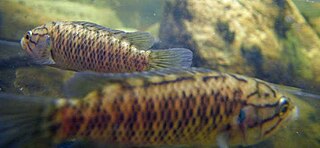 W
WSandelia is a genus of climbing gouramies native to freshwater habitats in South Africa.
 W
WThe scaly yellowfish, or KwaZulu-Natal yellowfish, is a species of freshwater fish in the family Cyprinidae.
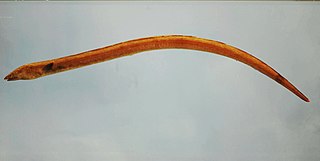 W
WThe shrimp eel is an eel in the family Ophichthidae. It was described by Francis de Laporte de Castelnau in 1855. It is a common inshore species of eel usually found in the shallow Gulf of Mexico and the high-salinity bays where it inhabits muddy habitats.
 W
WSternarchorhynchus is a genus of ghost knifefishes with a long, decurved snout that are found in river basins in tropical South America.
 W
WThe ocean surgeon or ocean surgeonfish is a tropical fish known to live in reefs in the western Atlantic Ocean, especially the Caribbean Sea. It is sometimes marketed fresh as a food item, but the Ocean surgeon is more often used as bait, or in tropical saltwater aquaria.
 W
WThe tiger pipefish is a species of pipefish native to the marine waters around Australia at depths of from 2 to 27 metres. This species grows to a length of 29.6 centimetres (11.7 in) SL. This species is the only known member of its genus.
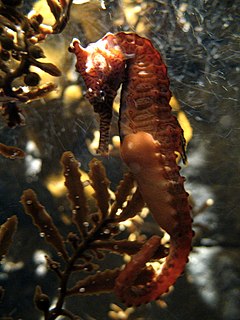 W
WThe tiger snout seahorse or West Australian seahorse, is a species of fish in the family Syngnathidae. It is endemic to south-western Australia, where it occurs from the Abrolhos Islands to Rockingham. Its natural habitats are the edges of rocky areas, muddy bottoms and areas with murky water caused by high sediment load, around jetty pilings and moorings; it is often associated with sponges or sea squirts and frequently attaches itself to man-made objects. In the winter they move to deeper water.
 W
WTriatoma is a genus of assassin bug in the subfamily Triatominae. The members of Triatoma are blood-sucking insects that can transmit serious diseases, such as Chagas disease. Their saliva may also trigger allergic reactions in sensitive individuals, up to and including severe anaphylactic shock.
 W
WVincentia is a genus of cardinalfishes native to the eastern Indian Ocean and the southwestern Pacific Ocean. The generic name refers to Gulf St Vincent in South Australia, where the type specimen of V. waterhousii was collected.
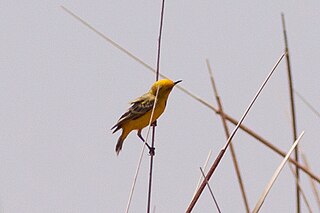 W
WThe yellow chat is a small passerine bird endemic to Australia. They are known for their remarkable adaptions that aid their survival in their arid habitat.